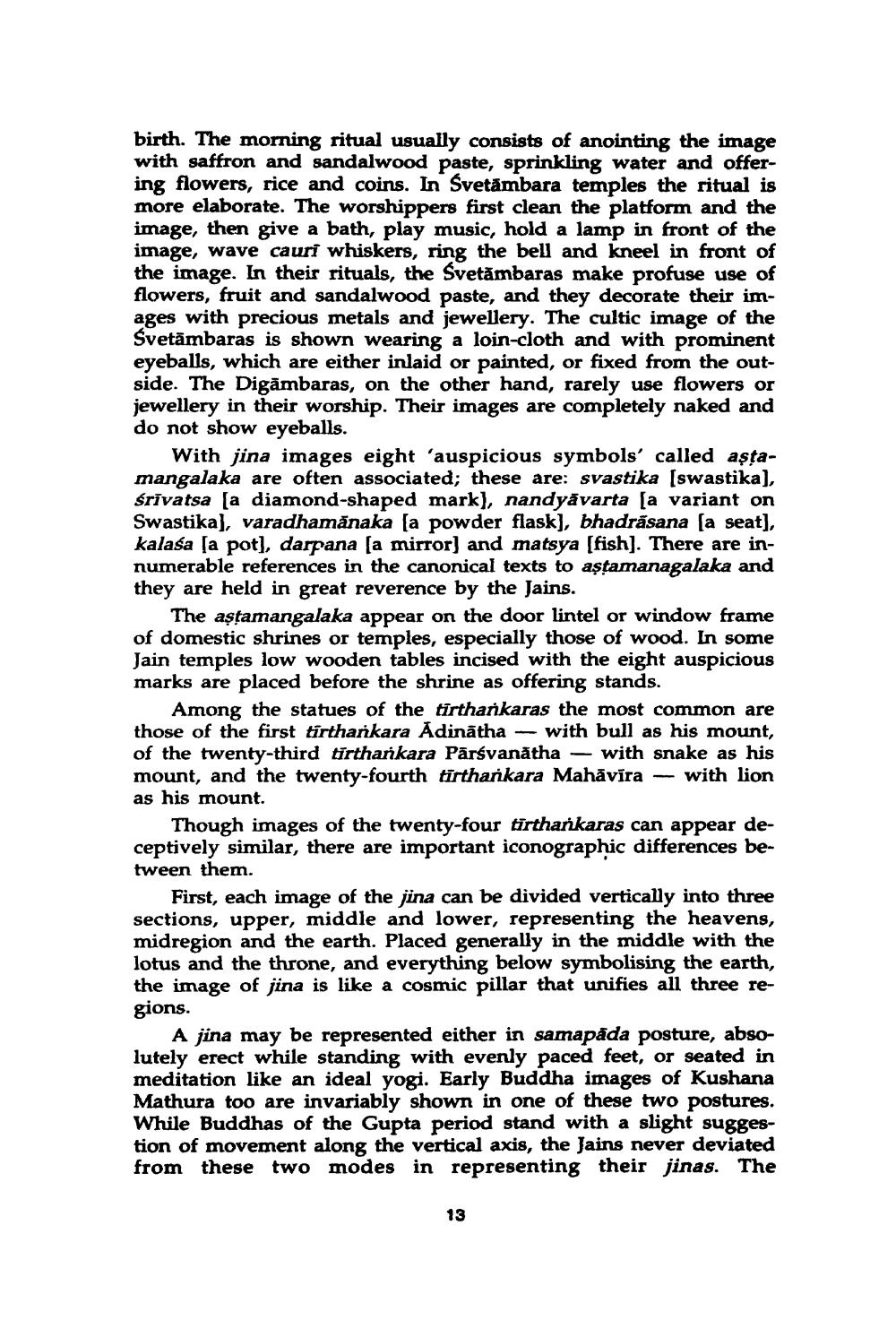________________
birth. The morning ritual usually consists of anointing the image with saffron and sandalwood paste, sprinkling water and offering flowers, rice and coins. In Svetambara temples the ritual is more elaborate. The worshippers first clean the platform and the image, then give a bath, play music, hold a lamp in front of the image, wave cauri whiskers, ring the bell and kneel in front of the image. In their rituals, the Svetămbaras make profuse use of flowers, fruit and sandalwood paste, and they decorate their images with precious metals and jewellery. The cultic image of the Svetämbaras is shown wearing a loin-cloth and with prominent eyeballs, which are either inlaid or painted, or fixed from the outside. The Digāmbaras, on the other hand, rarely use flowers or jewellery in their worship. Their images are completely naked and do not show eyeballs.
With jina images eight 'auspicious symbols' called aştamangalaka are often associated; these are: svastika (swastika), śrīvatsa a diamond-shaped mark), nandyăvarta [a variant on Swastika), varadhamanaka (a powder flask], bhadrâsana (a seat), kalasa sa pot], darpana (a mirror) and matsya (fish). There are innumerable references in the canonical texts to aştamanagalaka and they are held in great reverence by the Jains.
The aştamangalaka appear on the door lintel or window frame of domestic shrines or temples, especially those of wood. In some Jain temples low wooden tables incised with the eight auspicious marks are placed before the shrine as offering stands.
Among the statues of the tirtharkaras the most common are those of the first tirtharikara Adinātha — with bull as his mount, of the twenty-third tirtharkara Pārsvanātha — with snake as his mount, and the twenty-fourth tirtharikara Mahāvīra - with lion as his mount.
Though images of the twenty-four tirtharkaras can appear deceptively similar, there are important iconographic differences between them.
First, each image of the jina can be divided vertically into three sections, upper, middle and lower, representing the heavens, midregion and the earth. Placed generally in the middle with the lotus and the throne, and everything below symbolising the earth, the image of jina is like a cosmic pillar that unifies all three regions.
A jina may be represented either in samapada posture, absolutely erect while standing with evenly paced feet, or seated in meditation like an ideal yogi. Early Buddha images of Kushana Mathura too are invariably shown in one of these two postures. While Buddhas of the Gupta period stand with a slight suggestion of movement along the vertical axis, the Jains never deviated from these two modes in representing their jinas. The
13




